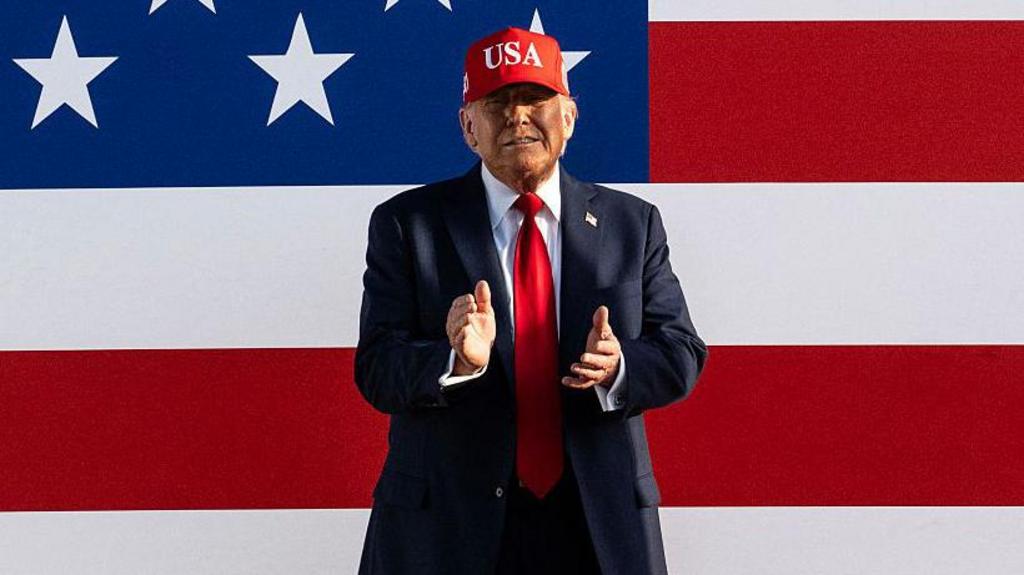Former U.S. President Donald Trump has issued a warning, stating that nations aligning with policies of the BRICS alliance that contradict U.S. interests will face an additional 10% tariff.
“Any country aligning themselves with the Anti-American policies of BRICS, will be charged an ADDITIONAL 10% tariff. There will be no exceptions to this policy,” Trump declared via social media.
Trump has been a long-standing critic of BRICS, an organization encompassing nations such as China, Russia, and India.
While the U.S. had initially set a July 9th deadline for countries to reach trade agreements, officials have now indicated that tariffs will commence on August 1st. Trump stated he would send formal letters to countries, outlining the applicable tariff rate in the absence of an agreement.
On Monday, Treasury Secretary Scott Bessent anticipated “a busy couple of days.”
“We’ve had a lot of people change their tune in terms of negotiations. So my mailbox was full last night with a lot of new offers, a lot of new proposals,” he told CNBC.
To date, the U.S. has only secured trade agreements with the UK and Vietnam, in addition to a partial accord with China.
However, Britain and America have yet to resolve a dispute regarding taxes on UK steel imported by the U.S.
Since assuming office this year, Trump has instituted a series of import tariffs on goods from various countries, asserting that these measures will bolster American manufacturing and safeguard jobs.
In April, on what he termed “Liberation Day,” he announced a range of new taxes on goods from countries worldwide – some as high as 50% – although he swiftly suspended his most aggressive plans to allow for three months of talks up until 9 July.
During this period, the U.S. imposed a 10% tariff on goods entering the States from the majority of its international trading partners.
The European Union (EU) is reportedly engaged in discussions to maintain a provisional 10% tax on most goods shipped to the U.S. beyond the specified deadline.
Talks are also underway to reduce a 25% tariff on EU cars and parts, as well as a 50% tax on steel and aluminum sales to the U.S.
On Monday, a spokesperson indicated that European Commission President Ursula von der Leyen had a “good exchange” with Trump. Just weeks prior, the U.S. president had threatened the EU with a 50% tax unless an agreement was reached.
Last week, Trump suggested Japan could face a “30% or 35%” tariff if the country failed to secure a deal with the U.S. by Wednesday.
When questioned about whether the taxes would change on July 9th or August 1st, Trump stated over the weekend: “They’re going to be tariffs, the tariffs are going to be tariffs.”
U.S. Commerce Secretary Howard Lutnick clarified that the taxes will take effect on August 1st.
Trump further added that between 10 and 15 letters would be dispatched to countries on Monday, informing them of their new tariff rate in the event that a deal is not agreed upon.
Bessent described the letters as “just ‘thank you for wanting to trade with the United States of America. We welcome you as a trading partner, and here’s the rate, unless you want to come back and try to negotiate’.”
In the past year, the list of BRICS members has expanded beyond the original group of Brazil, Russia, India, China, and South Africa to include Egypt, Ethiopia, Indonesia, Iran, Saudi Arabia, and the United Arab Emirates.
The nations comprising the bloc – which aims to enhance the members’ international standing and challenge the U.S. and Western Europe – represent more than half of the world’s population.
In 2024, Trump threatened 100% tariffs on BRICS countries if they moved ahead with their own currency to rival the US dollar.
Trump’s recent threat towards countries collaborating with BRICS nations arose after members criticized U.S. tariff policies and proposed reforms to the International Monetary Fund (IMF) and the valuation of major currencies.
Following a two-day meeting in Rio de Janeiro, BRICS finance ministers issued a statement condemning tariffs as a threat to the global economy and for introducing “uncertainty into international economic and trade activities.”
Andrew Wilson, Deputy Secretary General of the International Chambers of Commerce, indicated that it would be challenging for countries to disengage from doing business with China.
He told the BBC’s Today program: “Shifting away from China…in a number of sectors is far more difficult to achieve in the world in practice.
“You look at the dominance China has in a number of sectors – EVs, batteries [and] particularly rare earths and magnets, there are no viable alternatives to China production.”
As of July 7th, the White House has agreed:
Get our flagship newsletter with all the headlines you need to start the day. Sign up here.
The move comes ahead of a deadline that may see much higher import taxes on goods coming into the US.
As President Trump weighs tariff plans, he will have one eye on the US economy.
The US plans to charge 20% tariffs on Vietnamese goods – less than half the rate set to go into effect next week.
It would be well above the 24% tariff imposed on Japan as part of the so-called “Liberation Day” in April.
With days to go before 9 July, when the tariff pause ends, hopes persist but negotiations are tough.

